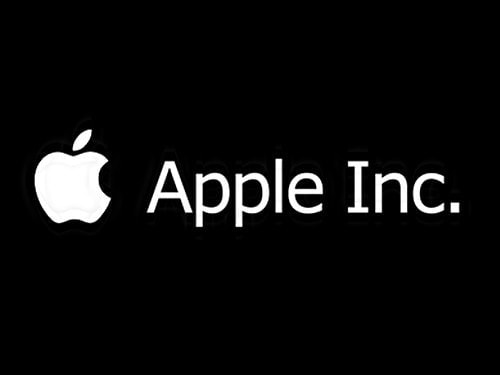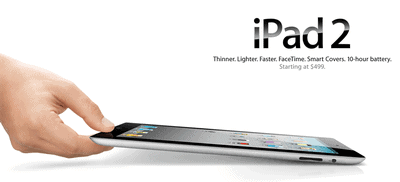The Marketing mix of Apple analyses the 4Ps of Apple’s marketing mix and strategy, which includes the Product, Price, Place, and Promotion of Apple. In 2016, Apple was rated as the number 1 brand worldwide. Beat that!! The number 1 company in a world where there are billions of companies. As seen from Apple’s marketing mix, it is no surprise that the company beat everyone else.
One first word that comes to mind when describing Apple as a brand is “Innovation.” The reason is that the number of products introduced by the company is very few, but they are solid and innovative. Apple does not have Samsung’s or Google’s product lines, but it has the product and digital marketing strength to defeat all of them.
About Apple Inc
- Type: Technology Company
- Industry: Consumer electronics, computer software, and online services
- Founded: April 1, 1976
- Founders: Steve Jobs, Steve Wozniak, and Ronald Wayne
- Headquarters: Cupertino, California, United States
- Area served: Worldwide
- Current CEO: Tim Cook
- Major Products: iPhone, iPad, Mac, Apple Watch, AirPods, HomePod, Apple TV, and Apple Music
Table of Contents
Let us go through the Marketing mix of Apple as a company.
Apple Product Strategy
Apple Inc. offers a diverse product mix that includes hardware, software, and services.
The Product Mix of Apple in 2023 is as follows (Source)
- iPhone: Apple’s flagship product, the iPhone, is a line of smartphones known for their design, performance, and iOS operating system. It includes various models with different features and price points to cater to a wide range of customers.
- iPad: Apple offers a range of iPad tablets, including the standard iPad, iPad Air, iPad mini, and iPad Pro. These devices are used for productivity, entertainment, and creative purposes, with options for consumers and professionals.
- Mac: Apple’s Mac product line includes desktop and laptop computers. This consists of the MacBook Air, MacBook Pro, Mac mini, iMac, and Mac Pro. Mac computers are known for their performance, design, and macOS operating system.
- Apple Watch: The Apple Watch is a line of smartwatches designed for health and fitness tracking, communication, and app integration. It has various models, including the Apple Watch Series 7, SE, and earlier versions.
- Apple TV: Apple TV is a set-top box and app platform that enables users to stream movies and TV shows and play games on their television screens. Apple also offers the Apple TV+ streaming service with original content.
- Air Pods: Apple’s wireless earbuds, including Air Pods, Air Pods Pro, and Air Pods Max, offer high-quality audio and seamless integration with Apple devices.
- Home Pod: The HomePod is Apple’s smart speaker, designed for music playback and home automation control. It includes the original Home Pod and Home Pod mini.
- Apple Software: Apple develops and maintains its software ecosystem, including iOS, macOS, watchOS, and tvOS. These operating systems power Apple’s hardware products and provide a seamless user experience.
- App Store: The App Store is Apple’s digital distribution platform, where users can download various apps and games for their devices. Apple earns revenue through app purchases and in-app transactions.
- iCloud: iCloud is Apple’s cloud storage and synchronization service, allowing users to store photos, documents, and data in the cloud and access it across their Apple devices.
- Apple Music: Apple Music is a subscription-based music streaming service that offers access to a vast catalog of songs, playlists, and radio stations.
- Apple Services: Apple offers a range of services, including AppleCare (extended warranty and support), Apple Pay (digital payment system), Apple Arcade (gaming subscription service), and Apple Fitness+ (fitness and workout service).
Apple Pricing Strategy
As discussed in the product part, Apple has innovative products that delight customers. Naturally, most of their products have premium pricing when they are superior to other brands and their competitors. The MacBook, iPad, iPhone, and IWatch are all excellent products.
One of the reasons for the premium pricing policy of Apple is the technology used in its products. People swear that once you get used to a MacBook, you won’t go for any other type of laptop. The same is true for iPhones and iPads. Naturally, with such a fan following and the same brand image and value, Apple demands premium pricing for all its products.
Apple Inc. employs a pricing and distribution strategy around its premium brand positioning, product differentiation, and a focus on delivering a superior customer experience. Here’s an analysis of Apple’s pricing strategy:
- Value-Based Pricing: Apple’s pricing strategy is primarily value-based, emphasizing the unique value and benefits its products offer customers. Apple sets prices that reflect the perceived value of its products, positioning them as premium and aspirational.
- Skimming Pricing: Apple often adopts a skimming pricing strategy when launching new products. Initially, prices are set high to capture early adopters and customers willing to pay a premium for the latest technology and design. Over time, prices may decrease as production costs decrease and competition intensifies.
- Price Discrimination: Apple offers a range of product models and configurations to cater to different customer segments and price points. This includes offering various iPhone models with varying storage capacities and features, enabling customers to choose based on their preferences and budgets.
- Bundle Pricing: Apple occasionally offers bundle pricing for its products and services. For example, the Apple One subscription bundle includes multiple Apple services like Apple Music, Apple TV+, iCloud, and more at a reduced monthly price compared to subscribing to each service individually.
- Product Differentiation: Apple differentiates its products not only through design and features but also through pricing. The company often positions higher-end models with advanced specifications and premium materials at higher prices while offering more affordable alternatives with fewer features for price-sensitive customers.
- Ecosystem Lock-In: Apple’s pricing strategy is closely tied to its ecosystem. By offering a seamless and integrated ecosystem of devices, software, and services, Apple encourages customers to stay within the Apple ecosystem. This can create a sense of loyalty and willingness to invest in additional Apple products.
- Limited Discounts: Apple tends to limit discounts and promotions on its products, maintaining consistent pricing across its retail and online channels. This strategy helps protect the premium image of Apple products.
- Apple Care and Services: Apple offers extended warranty and support services through AppleCare, generating additional revenue. Furthermore, the company earns revenue through services like the App Store, Apple Music, iCloud storage, and more.
- Trade-In Programs: Apple encourages customers to trade in their older Apple devices when purchasing new ones, providing credit toward the new purchase. This strategy incentivizes upgrades and allows Apple to refurbish and resell used devices.
Apple Place Strategy
Here’s a place strategy for Apple Inc.:
- Apple Retail Stores: Apple has a global network of flagship retail stores where customers can experience its products firsthand. These stores are strategically located in high-traffic areas and serve as hubs for sales, product support, and brand immersion.
- Authorized Resellers and Carrier Partnerships: Apple extends its reach through authorized resellers, such as electronics retailers and carrier stores. These partnerships ensure that Apple products are widely available and accessible through various distribution channels.
- Online Apple Store: The official Apple website is a prominent online sales and distribution platform. Customers can purchase Apple products, accessories, and software directly from the website, benefiting from a seamless online shopping experience.
- Ecosystem Integration: Apple leverages the integration of its devices, software, and services to create a cohesive ecosystem. Customers are encouraged to invest in multiple Apple products, ensuring they remain within the ecosystem promoting repeat purchases and brand loyalty.
- Global Presence: Apple’s products have a strong global presence and are available internationally. The company’s supply chain and distribution network ensure that products reach customers in various regions, making Apple a globally recognized and accessible brand.
Apple Promotion Strategy
Apple is known for its innovative and elegant promotions. The company’s primary focus is on its products and differentiating them from those of competitors. This is where Apple’s marketing strategy and communications derive its inspiration.
Take any ad from Apple, and you will find the ad speaks about what Apple is doing differently from anyone else. Quite recently, Apple even marketed headphones with a unique design, and even that ad showed how unique Apple was.
Some Recent Video ads and Print ads of Apple are:
https://www.youtube.com/watch?v=k9sAmAEn2oM
Accessibility – The Lost Voice – Apple
Privacy on iPhone | The Waiting Room | Apple – YouTube
Liked this post? Check out the complete series on Marketing Mix


sir i urgently need marketing mix of mother dairy…… could you plz help me out